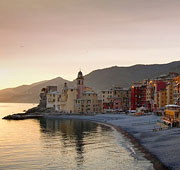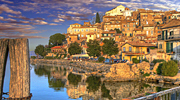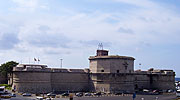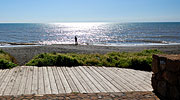In Lazio, tracing the Etruscans
From the ancient Caere to the city state of Vulci, from modern day Cerveteri to Tarquinia.
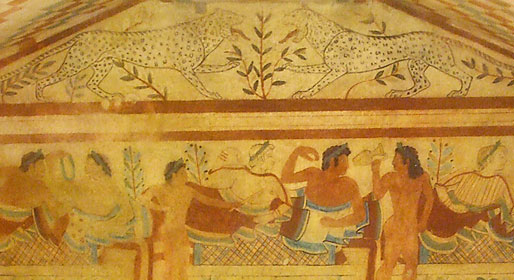
Before it was inhabited by the ancient Romans, central Italy, and in particular the regions of Tuscany and Lazio, were populated by the Etruscans: a highly developed civilisation the traces of whose artistic talent and architectural ingenuity can still be seen to this very day, in a number of fascinating archaeological sites.
The ancient Etruscan burial grounds are, arguably, the most impressive of all these, and in particular the necropoli of Cerveteri and Tarquinia, both of which awarded UNESCO world heritage status.
The city of the dead
This Etruscan itinerary commences with the Necropolis of Banditaccia. The site, situated within the territory of Cerveteri, extends over some 10 kilometers of land. Cerveteri, originally known by the name of Caere, was one of the most important Etruscan merchant cities.
The Necropolis of Cerveteri was built as if it were a city for the living and not the dead: with a series of intersecting roads lined with burial mounds constructed so as to look like houses
Great graves
Some four hundred tombs have been identified in this vast archaeological site, all dating back to the period between the 8th and 2nd century B.C.
Tombs of particular note include the Tomba dei Rilievi (tomb of reliefs), in which to see stuccoes depicting animals, tools and various episodes from daily life, and the Tomba degli Scudi e delle Sedie (tomb of the shields and chairs), containing six beds complete with pillows cut in to the tuff.
Cerveteri's Museo Nazionale Cerite is an absolute must for all those wishing to learn about the rise and fall of the Etruscans
Whilst in the town, a walk through the historic center offers visitors the opportunity to admire the medieval church of Santa Maria Maggiore, the 19th century Fontana del Mascherone, the Castle, and what remains of its ancient watch tower.
Living and dying like an Etruscan
From Cerveteri we head to Tarquinia, where to visit another impressive Etruscan burial ground. The Necropolis of Monterozzi has acquired worldwide fame for the stunning paintings embellishing circa 150 tombs, wall paintings which provide an invaluable insight in to the everyday life of the Etruscans.
Not to be missed, a visit to the National Etruscan Museum, in the historic center of Tarquinia. The museum, housed in Palazzo Vitelleschi, boasts a collection of thousands of Etruscan artefacts, including a number of faithfully reconstructed tombs.
Vulci Archaeological Park
Just a few kilometers from Tarquinia, lies the town of Canino, at the entrance to the Vulci Archaeological Park.
This part of Lazio, known as Maremma Laziale, was once home to the important city state of Vulci, the ruins of which can still be admired. The Tomb of Francois, Lake Pellicano, the Badia Castle and Museum: all these fascinating sites are located within the 900 hectare Park.



